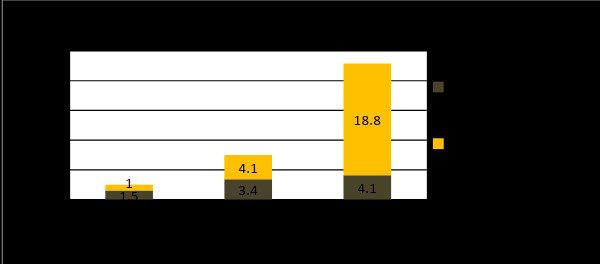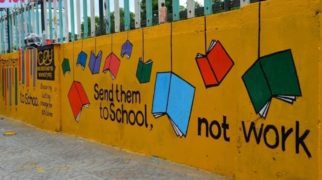Though shocking, almost 73% of the 33 million working children in India in the age group of 5-18 years do not go to school, as the Census 2011 data suggests. Going by absolute numbers, out of 359 million children in the same age-group, close to 33 million children are working, out of which 24 million of them don’t attend educational institutions. Here’s a report by CRY, for Different Truths.
As India celebrated the World Day against Child Labour on June 12 (last Tuesday), almost 73% of the 33 million working children in India in the age group of 5-18 years do not go to school, as the Census 2011 data suggests. Going by absolute numbers, out of 359 million children in the same age-group, close to 33 million children are working, out of which 24 million of them don’t attend educational institutions, stated a media release of CRY.
Bilal Ahmad of Banyarigarbi village in Bandipora district, Jammu & Kashmir, is just one of these 24 million. A 16-year-old, Bilal hails from a local fishing community, and this is what he has to say, “I’ve been going to the rivers for many years now. Ours is a family of fishermen. It’s a lot of back-breaking work, as I have to stay in the river for almost 8 to 9 hours every day. Standing under the sun for these many hours is torturous, especially during the summer. My whole body gets sunburnt and my eyes itch a lot. Winters bring no relief either. They are very harsh times with the snowing and the frost bites that hurt a lot! We really look forward to the p eak fishing season, our income goes up a bit at that time. But it takes a huge toll on my body as I have to stay awake through the night to ensure a good catch. No, I don’t go to school. Where’s the time? I have no choice other than supporting my family as our survival solely depends on fishing.”
eak fishing season, our income goes up a bit at that time. But it takes a huge toll on my body as I have to stay awake through the night to ensure a good catch. No, I don’t go to school. Where’s the time? I have no choice other than supporting my family as our survival solely depends on fishing.”
Bilal is just one among the 1.6 million children in Jammu & Kashmir, who has no options to go to work, and not to school.
The state still has a better score than the national average. According to census 2011 figures, 72.7% of the child labourers in India do not go to school. And the scenario is not very different in most of the large states of the country. In Rajasthan, 75% of children in the age-group of 5-18 years who are employed do not attend any educational institution, in Uttar Pradesh, the percentage is 66.2%, and in Madhya Pradesh, it is 77%. Among the eastern states of Bihar and West Bengal, the numbers stand at 68.2% and 78.6% respectively, while in the southern states of Karnataka and Andhra Pradesh it is 79.5% and 79.7%. Maharashtra has 71.6% child labourers out of school and Gujarat has 83.2%, one of the highest. Roughly translated, this data shows that childhood is not equipped to balance work and studies.
Fig 1: An analysis of the status of child labourers in India in different age groups (Insert caption)
“This shows that, in India, child labour has for some reason turned into a social norm – one that is ‘accepted’ and cannot apparently be changed. Not often people do question its existence, and whenever they do, are quickly silenced with words like poverty, survival, and fate. The only way to deal with this exploitative and abusive issue is with an attitude of zero tolerance. And needless to say, education is the only answer, says Puja Marwaha, CEO, CRY-Child Rights and You.
Explaining how education can play the game-changer in eliminating child labour Puja says, “When a child goes to school, it sets off a cycle of possibilities – the possibility of figuring out an area to excel in, an alternative career, an informed choice. Simply speaking, a school is a child’s gateway to the future – a future that is not bound by defined limitations.”
In 2016, the Child Labour (Prohibition & Regulation) Act was amended to state that neither children (under the age of 14 years) and adolescents (within the age-group of 15-18 years) can be employed in ‘hazardous’ occupations, but children below 14 can be engaged in ‘helping’ their family-run enterprises, and work as child artists in the entertainment industry. Adolescents, according to this amendment, can work in ‘non-hazardous’ occupations following specific terms and conditions. This entire legislation is based on the assumption that children can work while they are studying. Analysis of Census data, however, reveals a picture that is completely the opposite of this assumption, the release stated.
“It is only natural that children will drop out of school, unable to bear the additional burden of education. Being engaged in work leaves these children with no time to study, play or explore other opportunities to realise their potential. In effect, these children do not even get a fair chance. When a child goes to school, s/he has the opportunity and the premise to break away from the clutches of poverty. A child engaged in labourer is the very death of that possibility. Every single child in school is one less child labourer in the making. Every child labourer, thus, rescued, is an opportunity waiting to blossom,” Puja adds.
©Different Truths News Service (DTNS)
Photos from the Internet
#ChildLabour #ChildEducation #CRY #NGOforChildren #CRYChildRightsandYou #WorldDayagainstChildLabour #CoverStory #DifferentTruths







 By
By
 By
By

 By
By